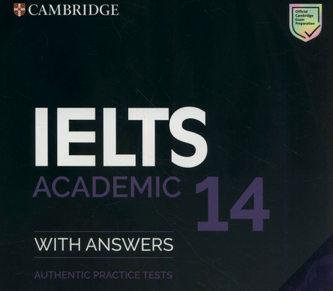 Ebinstein
Ebinsteinどうも、Ielts対策をしているEbinsteinです。今回は私がIeltsの勉強をしていて、結構間違えたな、と思う所を備忘録として残しておきます。少しでも皆さんのお役に立てれわ幸いです。
Cambridge IELTS 14 READING PASSAGE 3『Why companies should welcome disorder』
You should spend about 20 minutes on Questions 27-40 which are based on Reading Passage 3 below.
Why companies should welcome disorder
A
Organisation is big business. Whether it is of our lives – all those inboxes and calendars – or how companies are structured, a multi-billion dollar industry helps to meet this need.
We have more strategies for time management, project management and self-organisation than at any other time in human history. We are told that we ought to organize our company, our home life, our week, our day and seven our sleep, all as a means to becoming more productive. Every week, countless seminars and workshops take place around the world to tell a paying public that they ought to structure their lives in order to achieve this.
This rhetoric has also crept into the thinking of business leaders and entrepreneurs, much to the delight of self-proclaimed perfectionists with the need to get everything right. The number of business schools and graduates has massively increased over the past 50 years, essentially teaching people how to organise well.
B
Ironically, however, the number of business that fail has also steadily increased. Work-related stress has increased. A large proportion of workers from all demographics claim to be dissatisfied with the way their work is structured and the way they are managed.
This begs the question: what has gone wrong? Why is it that on paper the drive for organisation seems a sure shot for increasing productivity, but in reality falls well short of what is expected?
C
This has been a problem for a while now. Frederick Taylor was one of the forefathers of scientific management. Writing in the first half of the 20th century, he designed a number of principles to improve the efficiency of the work process, which have since become widespread in modern companies. So the approach has been around for a while.
D
New research suggests that this obsession with efficiency is misguided. The problem is not necessarily the management theories or strategies we use to organise our work; it’s the basic assumptions we hold in approaching how we work. Here it’s the assumption that order is a necessary condition for productivity. This assumption has also fostered the idea that disorder must be detrimental to organizational productivity. The result is that businesses and people spend time and money organising themselves for the sake of organising, rather than actually looking at the end goal and usefulness of such an effort.
E
What’s more, recent studies show that order actually has diminishing returns. Order does increase productivity to a certain extent, but eventually the usefulness of the process of organisation, and the benefit it yields, reduce until the point where any further increase in order reduces productivity. Some argue that in a business, if the cost of formally structuring something outweighs the benefit of doing it, then that thing ought not to be formally structured. Instead, the resources involved can be better used elsewhere.
F
In fact, research shows that, when innovating, the best approach is to create an environment devoid of structure and hierarchy and enable everyone involved to engage as one organic group. These environments can lead to new solutions that, under conventionally structured environments (filled with bottlenecks in term of information flow, power structures, rules, and routines) would never be reached.
G
In recent times companies have slowly started to embrace this disorganisation. Many of them embrace it in terms of perception (embracing the idea of disorder, as opposed to fearing it) and in terms of process (putting mechanisms in place to reduce structure).
For example, Oticon, a large Danish manufacturer of hearing aids, used what it called a ‘spaghetti’ structure in order to reduce the organisation’s rigid hierarchies. This involved scrapping formal job titles and giving staff huge amounts of ownership over their own time and projects. This approach proved to be highly successful initially, with clear improvements in worker productivity in all facets of the business.
In similar fashion, the former chairman of General Electric embraced disorganisation, putting forward the idea of the ‘boundaryless’ organisation. Again, it involves breaking down the barriers between different parts of a company and encouraging virtual collaboration and flexible working. Google and a number of other tech companies have embraced (at least in part) these kinds of flexible structures, facilitated by technology and strong company values which glue people together.
H
A word of warning to others thinking of jumping on this bandwagon: the evidence so far suggests disorder, much like order, also seems to have diminishing utility, and can also have detrimental effects on performance if overused. Like order, disorder should be embraced only so far as it is useful. But we should not fear it – nor venerate one over the other. This research also shows that we should continually question whether or not our existing assumptions work.
Questions 27-34
Reading Passage 3 has eight sections, A-H
Choose the correct heading for each section from the list of headings below.
Write the correct number, i-ix, in boxes 27-34 on your answer sheet.
List of Headkings
i Complaints about the impact of a certain approach
ii Fundamental beliefs that are in fact incorrect
iii Early recommendations concerning business activities
iv Organisations that put a new approach into practice
v Companies that have suffered from changing their approach
vi What people are increasingly expected to do
vii How to achieve outcomes that are currently impossible
viii Neither approach guarantees continuous improvement
ix Evidence that a certain approach can have more disadvantages that advantages
27 Section A
28 Section B
29 Section C
30 Section D
31 Section E
32 Section F
33 Section G
34 Section H
Questions 35-37
Complete the sentences below.
Choose ONE WORD ONLY from the passage for each answer.
Write your answers in boxes 35-37 on your answer sheet.
35 Numerous training sessions are aimed at people who feel they are not ………………………. enough.
36 Being organised appeals to people who regard themselves as ……………………………
37 Many people feel ……………………….. with aspects of their work.
Questions 38-40
Do the following statements agree with the information given in Reading Passage 3?
In boxes 38-40 on your answer sheet, write
TRUE if the statement agrees with the information
FALSE if the statement contradicts the information
NOT GIVEN if there is no information on this
38 Both businesses and people aim at order without really considering its value.
39 Innovation is most successful if the people involved have distinct roles.
40 Google was inspired to adopt flexibility by the success of General Electric.
全訳文
以下のReading Passage 3に基づいたQuestion 27-40に約20分かけてください。
企業が無秩序を歓迎すべき理由
A
整理整頓は大きなビジネスです。それが私たちの生活(すべての受信トレイやカレンダー)であろうと、企業がどのように構成されているかであろうと、数十億ドル規模の産業がこのニーズを満たすのに役立っている。
私たちは、人類史上最も多くの時間管理、プロジェクト管理、自己組織化の戦略を持っています。生産性を高めるためには、会社、家庭、1週間、1日、7日間の睡眠などを整理する必要があると言われています。毎週、数え切れないほどのセミナーやワークショップが世界中で開催され、お金を払っている人々に、このようなことを達成するためには自分の人生を構成する必要があると教えています。
このレトリックは、ビジネスリーダーや起業家の考え方にも浸透しており、すべてを正しく行う必要のある自称完璧主義者たちを喜ばせています。過去50年間でビジネススクールの数と卒業生の数は大幅に増加し、本質的に人々に組織化する方法を教えています。
B
しかし、皮肉なことに、失敗するビジネスの数も着実に増えています。仕事上のストレスも増えています。あらゆる層の労働者の多くが、自分の仕事の進め方や管理方法に不満を持っていると答えています。
では、何が問題なのでしょうか。紙面上では、生産性向上のために組織化を推進することが確実であるように見えますが、実際には期待を大きく裏切っているのはなぜでしょうか。
C
これは、以前から問題になっていたことです。フレデリック・テイラーは、科学的管理の先駆者の一人です。彼は20世紀前半に、仕事の効率を高めるためのいくつかの原則を考案し、それが現代の企業に広く浸透しています。つまり、このアプローチは以前からあったのです。
D
新しい研究によると、この効率性へのこだわりは見当違いのようです。問題は、必ずしも仕事を組織化するためのマネジメント理論や戦略にあるのではなく、仕事の進め方にアプローチする際の基本的な前提条件にあるのです。ここでは、秩序が生産性の必要条件であるという前提があります。この前提は、「無秩序は組織の生産性に悪影響を与えるに違いない」という考えをも育んできました。その結果、企業や人々は、そのような努力の目的や有用性を実際に見るのではなく、組織化のために時間やお金を費やすことになります。
E
さらに、最近の研究では、秩序には実際には収穫逓減があることがわかっています。秩序は生産性をある程度向上させますが、最終的には、プロセスの有用性とそれによって得られる利益が減少し、これ以上秩序を増やすと生産性が低下するというのです。ビジネスにおいては、何かを形式的に構成することのコストが、それを行うことのメリットを上回るのであれば、そのものは形式的に構成されるべきではないという意見もあります。その代わりに、必要なリソースを他の場所で有効活用することができるます。
F
実際に、イノベーションを起こす際には、構造や階層を持たない環境を作り、関係者が有機的に一つのグループとして関与することが最良のアプローチであるという調査結果があります。このような環境では、従来の構造化された環境(情報の流れ、権力構造、ルール、ルーティンなどのボトルネックがある)では決して到達できなかった新しいソリューションを導き出すことができます。
G
最近では、企業はこの無秩序さを少しずつ受け入れ始めています。その多くは、認識の面(無秩序を恐れるのではなく、受け入れる)と、プロセスの面(構造を減らすための仕組みを導入する)で受け入れています。
例えば、デンマークの大手補聴器メーカーであるオーティコンは、組織の硬直したヒエラルキーを減らすために、「スパゲッティ」と呼ばれる構造を採用しました。これは、正式な役職名を廃止し、スタッフに自分の時間やプロジェクトに対する膨大なオーナーシップを与えるというもの。このアプローチは当初、大きな成功を収め、ビジネスのあらゆる面で従業員の生産性が明らかに向上しました。
同様に、ゼネラル・エレクトリック社の元会長は、「無秩序」を受け入れ、「境界のない」組織というアイデアを提唱した。これもまた、企業内のさまざまな部分の垣根を取り払い、バーチャルなコラボレーションや柔軟な働き方を奨励するものです。グーグルをはじめとする数多くのハイテク企業は、テクノロジーと、人々を結びつける強い企業価値によって、このような柔軟な構造を(少なくとも部分的には)取り入れています。
H
このブームに乗ろうと考えている人に警告しておきます。これまでの証拠では、秩序と同様に、無秩序も有用性が減少しているようであり、使いすぎるとパフォーマンスに悪影響を及ぼす可能性があります。秩序と同様に、無秩序もまた、それが有用である限りにおいて受け入れられるべきです。しかし、それを恐れたり、どちらかを崇拝したりするべきではありません。今回の研究では、既存の前提が機能しているかどうかを常に疑うべきだということも示されています。
質問27-34
Reading Passage 3にはA~Hの8つのセクションがあります。
各セクションの見出しとして正しいものを下の見出しリストから選んでください。
また、解答用紙の27~34の欄に、正しい番号(i~ix)を記入してください。
見出しのリスト
i 特定のアプローチの影響に対する不満
ii 実際には間違っている基本的な信念
iii 事業活動に関する初期の提言
iv 新しいアプローチを実践した組織
v アプローチを変えたことで被害を受けた企業
vi 人に期待されていること
vii 現在は不可能なことを実現する方法
viii どちらのアプローチも継続的な改善を保証するものではない
ix あるアプローチが、メリットよりもデメリットの方が大きいことを示す証拠
27 セクションA
28 セクションB
29 セクションC
30 セクション D
31 セクション E
32 セクションF
33 セクション G
34 セクションH
質問 35-37
以下の文章を完成させてください。
それぞれの答えには文章中の単語を一つだけ選んでください。
答えは、解答用紙の35~37の欄に記入してください。
35 数多くのトレーニングセッションは、自分が ………………………. 十分ではないと感じている人々を対象としている。
36 組織化されていることは、自分自身を …………………………… と見なしている人々にとって魅力的である。
37 多くの人が自分の仕事の側面について ……………………….. と感じている。
質問 38-40
以下の記述は、Reading Passage 3 で与えられた情報と一致していますか?
解答用紙の38~40の欄に、次のように書いてください。
情報と一致していれば「真
情報と矛盾している場合は「偽
これに関する情報がない場合は、”NOT GIVEN “と記入してください。
38 企業も人も、その価値をよく考えずに秩序を目指している。
39 イノベーションが最も成功するのは、関係者が明確な役割を持っている場合である。
40 グーグルはゼネラル・エレクトリック社の成功に触発されて柔軟性を採用した。
注意するべき単語
- Oranisation
会社や企業なら加算名詞なので、この場合は「整理整頓」と訳すべき? - as a means
~するための手段として - take place
行われる - rhetoric
美辞麗句, 修辞学,レトリック - crept c
reepの過去形 忍びよる,浸透する - delight of
喜び - proclaim
公言する,宣言する - steadily
徐々に gradually - demographic
層、購買層、人口統計 - on paper
紙に書いて,理論上は, 机上では - forefathers
祖先 - obsession
こだわり - for a while now
これまでのところしばらく - around for a while
以前からある - assumption
想定 - detrimental
有害な - for the sake of
するために - diminish returns
収穫逓減 - devoid of
欠いている - hierarchy
階層制 - embrace
を抱き締める - as opposed to
と対照的に - in terms of
~を単位として
~に関して、~の観点から - hearing aids
補聴器 - rigid
1 <やり方・規則などが> 厳格な, 融通性のない - bandwagon
流行 jumping on this bandwagon で「この流行に乗っかる」 - detrimental
有害な - diminishing utility
だんだん下がって行く利便性 - venerate
尊敬する。
注意すべき箇所
Aの5行目”means “とDの最終行”end goal”。この2つは文脈的に”手段”と”目的”とすべき。
‘spagetti’ structure = みんなバラバラでいろんなものが絡んでいるものの喩え。
Headingの問題の解き方
問題のListの中にあるキーワードをチェック
一般的に長い文字数からだとやりにくいので、少ない文字数の段落から確定させていく。
各段落の初めの1、2文と最後の文を読む。段落全体を読むと混乱する場合あり。
チェックしたキーワードの言い換えがどれに当たるのか確認する。
今回の問題では、選択肢 ivの”Organisations”が分かれば、速攻で一つ選択肢を減らすことができます。



Organisationsは複数形なので企業とかを表しているので、企業が出てきるのはGとなるので、速攻で終わります。



あくまでも私の備忘録なので、内容に待ちがちがあった場合はご容赦ください。ですが、少しでも皆様のお役に立てればと思います。








コメント